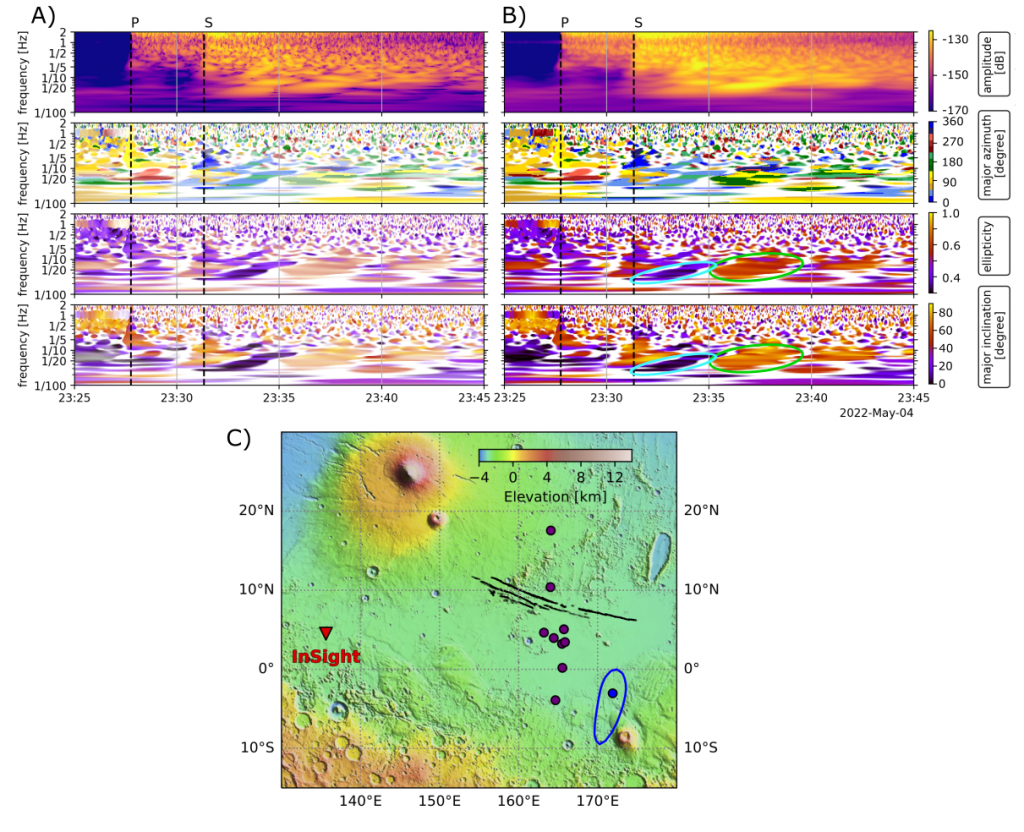About InSight and SEIS:
JPL manages the InSight mission on behalf of NASA's Science Mission Directorate. InSight is part of NASA's Discovery program, managed by the Marshall Space Flight Center (MSFC), a NASA facility in Huntsville, Alabama.
Lockheed Martin Space in Denver built the InSight probe, including its cruise stage and lander, and supports spacecraft operations for the mission. CNES is the prime contractor for SEIS and the Institut de Physique du Globe de Paris (Université Paris Cité/IPGP/CNRS) has scientific responsibility for it. CNES is financing the French contributions, coordinating the international consortium (*) and has been responsible for the integration, testing and supply of the complete instrument to NASA. IPGP designed the VBB (Very Broad Band) sensors, tested them before delivery to CNES and is contributing to the operation of the VBBs on Mars.
SEIS and APSS operations are led by CNES within the FOCSE-SISMOC, with support from the Centro de Astrobiologia (Spain). SEIS data is formatted and distributed by the Mars SEIS Data Service of the IPG Paris, as part of the InSight National Observation Service, to which the LPG also contributes and, for Sismo activities at the School, GéoAzur. Daily identification of earthquakes is carried out by InSight's Mars Quake Service, a collaborative operational service led by ETH Zurich to which seismologists from IPG Paris, the University of Bristol (UK) and Imperial College London (UK) also contribute.
Several other CNRS laboratories, including the LMD (CNRS/ENS Paris/Ecole polytechnique/Sorbonne Université), the LPG (CNRS/Nantes Université/Le Mans Université/Université d'Angers), the IRAP (CNRS/Université de Toulouse/CNES) and the LGL-TPE (CNRS/Ecole normale supérieure de Lyon/Université Claude Bernard Lyon 1), IMPMC (Sorbonne Université/Muséum national d'Histoire naturelle/CNRS) and LAGRANGE (CNRS/Université Côte d'Azur/Observatoire de la Côte d'Azur) are working with IPGP and ISAE-SUPAERO to analyse data from the InSight mission. These analyses are supported by CNES and the French National Research Agency as part of the ANR MArs Geophysical InSight (MAGIS) project.
(*) In collaboration with SODERN for the production of the VBBs, JPL, the Swiss Federal Institute of Technology Zurich (ETH, Zürich, Switzerland), the Max Planck Institute for Solar System Research (MPS, Göttingen, Germany), Imperial College London and Oxford University have supplied the SEIS subsystems and are participating in the scientific exploitation of SEIS.










